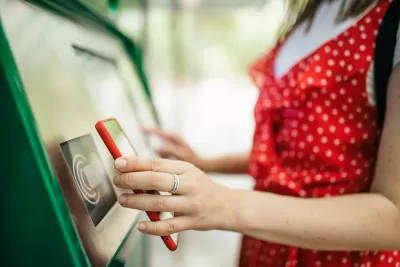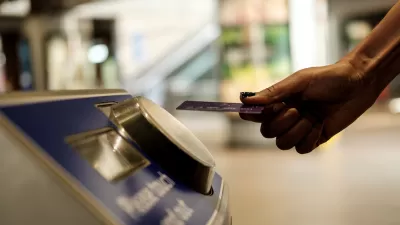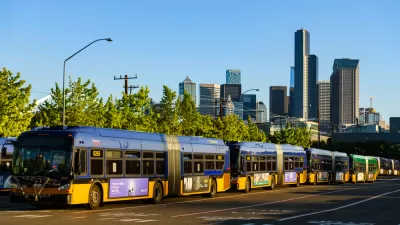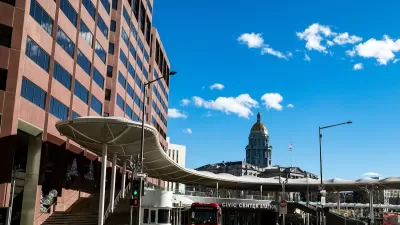New tech can streamline boarding and make fare capping easier, but can risk creating new challenges for low-income riders.

According to an article by John Adams in American Banker, contactless transit fare collection, which grew sharply during the pandemic as agencies sought ways to keep riders and operators safe and prevent the spread of Covid-19, are transforming transit in a variety of ways.
In Mexico City and Lisbon, Portugal, contactless payment systems that work with iPhones and other devices let riders avoid prepayment and make travel easier for tourists and travelers who don’t have local transit cards. “In June, the Netherlands became one of the first countries to adopt an open loop contactless transit payments system for the entire country. Travelers can use any debit, credit or digital wallet account on all buses, trains, metro systems, trams and ferries across all local networks.”
Moving to contactless fare collection can speed up service, reducing the time needed for boarding and allowing for all-door boarding, and creates the opportunity for fare capping. But some transit advocates say removing a cash option puts many low-income riders at a disadvantage. In Los Angeles, new fare collection tech and a fare capping program are being combined with community outreach and distribution of TAP cards to ensure the cost of the cards isn’t a burden to riders who traditionally pay in cash.
FULL STORY: The many ways contactless payments are transforming mass transit

Trump Administration Could Effectively End Housing Voucher Program
Federal officials are eyeing major cuts to the Section 8 program that helps millions of low-income households pay rent.

Planetizen Federal Action Tracker
A weekly monitor of how Trump’s orders and actions are impacting planners and planning in America.

Ken Jennings Launches Transit Web Series
The Jeopardy champ wants you to ride public transit.

California Invests Additional $5M in Electric School Buses
The state wants to electrify all of its school bus fleets by 2035.

Austin Launches $2M Homelessness Prevention Fund
A new grant program from the city’s Homeless Strategy Office will fund rental assistance and supportive services.

Alabama School Forestry Initiative Brings Trees to Schoolyards
Trees can improve physical and mental health for students and commnity members.
Urban Design for Planners 1: Software Tools
This six-course series explores essential urban design concepts using open source software and equips planners with the tools they need to participate fully in the urban design process.
Planning for Universal Design
Learn the tools for implementing Universal Design in planning regulations.
Ada County Highway District
Clanton & Associates, Inc.
Jessamine County Fiscal Court
Institute for Housing and Urban Development Studies (IHS)
City of Grandview
Harvard GSD Executive Education
Toledo-Lucas County Plan Commissions
Salt Lake City
NYU Wagner Graduate School of Public Service





























